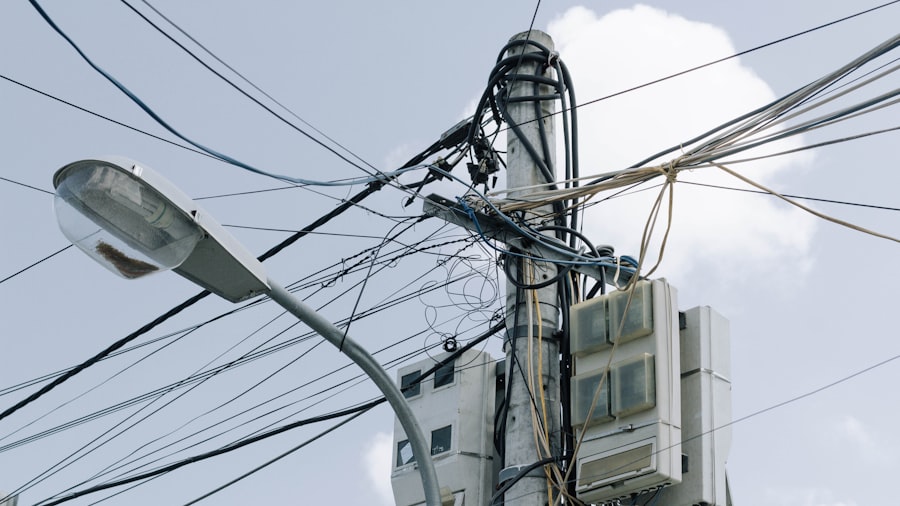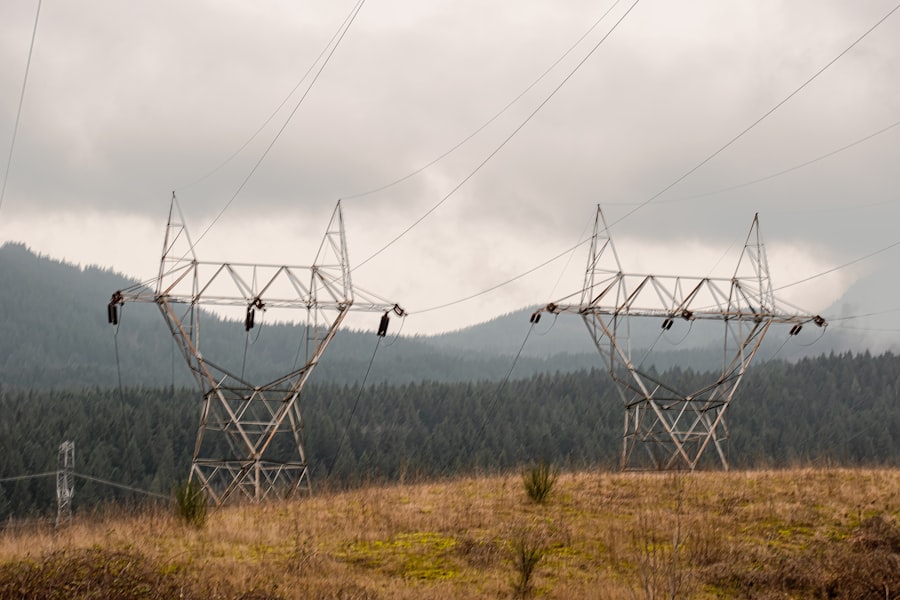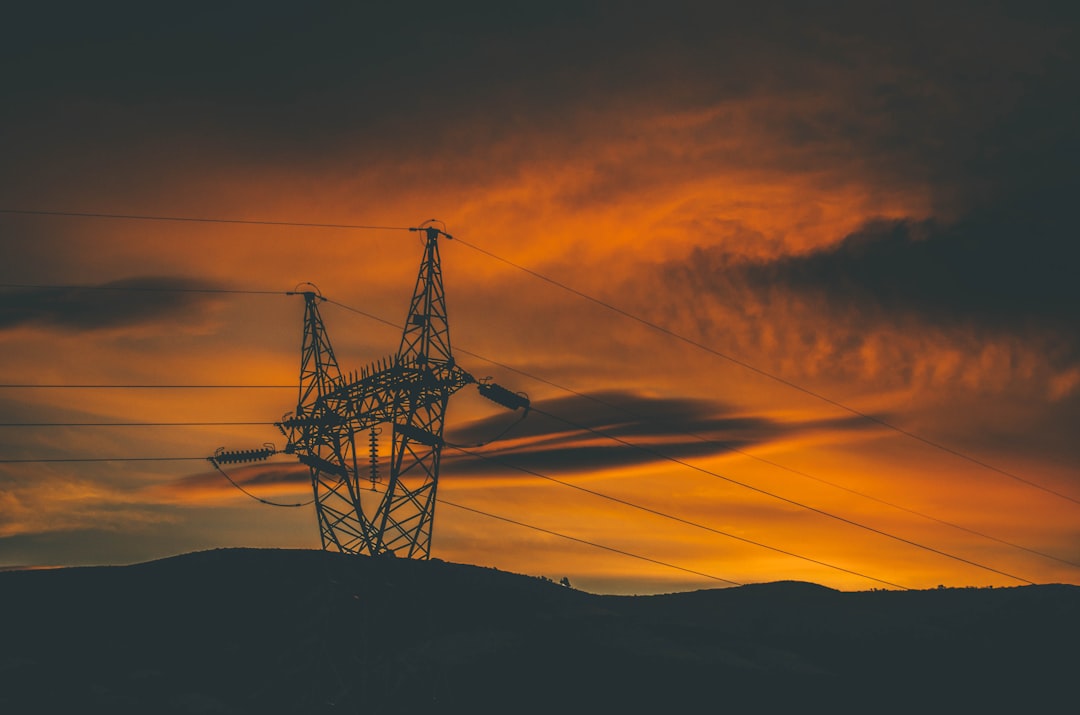Utility stranded costs refer to the financial burdens that arise when a utility company is unable to recover its investments due to changes in market conditions, regulatory environments, or technological advancements. These costs typically stem from long-term investments in infrastructure, such as power plants or transmission lines, which may become obsolete or less valuable as the energy landscape evolves. For instance, if a utility has invested heavily in coal-fired power plants and the market shifts towards renewable energy sources, the utility may find itself with stranded assets that no longer generate sufficient revenue to cover their operational and maintenance costs.
The concept of stranded costs is particularly relevant in the context of energy deregulation, where traditional monopolistic structures are dismantled in favor of competitive markets. As competition increases, utilities may struggle to maintain profitability while adapting to new market dynamics. This situation can lead to significant financial challenges for utility companies, as they grapple with the need to recover their sunk costs while also investing in new technologies and infrastructure that align with changing consumer preferences and regulatory mandates.
Key Takeaways
- Utility stranded costs arise when deregulation leaves utilities unable to recover investments made under previous regulatory frameworks.
- Various methods, including surcharges and transition charges, are used to recover stranded costs from ratepayers.
- Regulatory approaches balance the need to recover costs while promoting fair competition and protecting consumers.
- Stranded cost recovery intersects with renewable energy and energy efficiency initiatives, influencing market dynamics.
- Legal, policy, and market challenges continue to shape the evolution and future trends of stranded cost recovery mechanisms.
The Impact of Deregulation on Utility Stranded Costs
Deregulation has fundamentally altered the landscape of the energy sector, leading to both opportunities and challenges for utility companies. One of the most significant impacts of deregulation is the potential for increased stranded costs. As utilities transition from regulated monopolies to competitive entities, they may find that their existing investments are no longer aligned with market demands.
For example, a utility that has invested heavily in fossil fuel generation may face declining revenues as consumers shift towards cleaner energy sources, resulting in stranded costs associated with those investments. Moreover, deregulation can create a more volatile market environment, where prices fluctuate based on supply and demand dynamics. This volatility can exacerbate the issue of stranded costs, as utilities may struggle to predict future revenues and adjust their business models accordingly.
In this context, utilities must navigate a complex landscape of regulatory requirements and market forces while attempting to recover their stranded costs. The challenge lies in balancing the need for financial stability with the imperative to innovate and adapt to a rapidly changing energy market.
Methods of Stranded Cost Recovery

Utilities have several methods at their disposal for recovering stranded costs, each with its own advantages and disadvantages. One common approach is through rate adjustments, where utilities seek approval from regulatory bodies to increase customer rates to cover their stranded costs. This method allows utilities to recoup some of their investments over time but can lead to higher bills for consumers, potentially sparking public backlash and regulatory scrutiny.
Another method involves securitization, which allows utilities to convert their stranded costs into tradable securities. By issuing bonds backed by future revenue streams, utilities can raise capital upfront to recover their stranded costs while spreading the repayment burden over time.
However, securitization requires careful regulatory oversight to ensure that it does not lead to excessive financial burdens on ratepayers.
Regulatory Approaches to Stranded Cost Recovery
| Regulatory Approach | Description | Recovery Mechanism | Typical Duration | Impact on Consumers | Examples |
|---|---|---|---|---|---|
| Transition Charges | Charges imposed on customers to recover stranded costs during market restructuring. | Fixed monthly fees or per kWh charges | 5-10 years | Moderate increase in rates during transition period | California, Texas |
| Bond Issuance | Utilities issue bonds to finance stranded costs, repaid over time through rates. | Bond repayment charges included in customer bills | 10-20 years | Spreads cost over long term, minimizing immediate rate shock | New York, Illinois |
| Regulatory Asset Recovery | Stranded costs recorded as regulatory assets to be recovered through future rates. | Incorporated into rate base and recovered via rates | Varies by commission order | Potentially higher rates until full recovery | Florida, Pennsylvania |
| Competitive Transition Charges (CTCs) | Charges applied to customers switching suppliers to cover stranded costs. | Per kWh charge on departing load | Until stranded costs are fully recovered | May discourage customer switching | Massachusetts, Maryland |
| Cost Sharing Mechanisms | Stranded costs shared between utilities and customers to reduce burden. | Partial recovery through rates, partial absorbed by utility | Negotiated case-by-case | Reduces rate impact but may affect utility financials | Oregon, Washington |
Regulatory bodies play a crucial role in determining how stranded costs are managed and recovered within the energy sector. Different jurisdictions may adopt varying approaches to stranded cost recovery, influenced by local market conditions, political considerations, and public sentiment. Some regulators may implement mechanisms that allow utilities to recover stranded costs more quickly, recognizing the need for financial stability in a transitioning market.
Others may take a more cautious approach, emphasizing consumer protection and ensuring that ratepayers are not unduly burdened by the costs associated with outdated investments. In many cases, regulatory frameworks are evolving to address the complexities of stranded cost recovery in a deregulated environment. Policymakers are increasingly recognizing the importance of balancing the interests of utilities and consumers while promoting a sustainable energy future.
This has led to discussions around innovative regulatory mechanisms that can facilitate stranded cost recovery while also encouraging investment in renewable energy and energy efficiency initiatives.
The Role of Ratepayers in Stranded Cost Recovery
Ratepayers are central to the discussion surrounding stranded cost recovery, as they ultimately bear the financial implications of utility decisions. When utilities seek to recover stranded costs through rate increases or other mechanisms, ratepayers must navigate the impact on their monthly bills. This dynamic creates a complex relationship between utilities and consumers, where ratepayers may feel the burden of past investments that no longer align with current market realities.
Moreover, ratepayers often have varying perspectives on stranded cost recovery based on their individual circumstances and values. Some may prioritize stable energy prices and support measures that allow utilities to recover their costs quickly, while others may advocate for more gradual approaches that minimize immediate financial impacts. This divergence in opinions underscores the importance of transparent communication between utilities and ratepayers, as well as the need for regulatory frameworks that consider consumer interests alongside utility financial stability.
Challenges in Stranded Cost Recovery

Stranded cost recovery presents numerous challenges for both utilities and regulators. One significant hurdle is the difficulty in accurately assessing the value of stranded assets. Determining how much a utility can reasonably recover from its investments requires careful analysis of market conditions, future revenue projections, and regulatory considerations.
This complexity can lead to disputes between utilities and regulators over what constitutes a fair recovery amount. Additionally, public perception plays a critical role in shaping the discourse around stranded cost recovery. Ratepayers may resist rate increases or other recovery mechanisms if they perceive them as unjust or excessive.
This resistance can complicate negotiations between utilities and regulators, as public sentiment often influences policy decisions. Utilities must navigate these challenges while also striving to maintain investor confidence and ensure long-term financial viability.
Stranded Cost Recovery and Renewable Energy
The transition towards renewable energy sources has significant implications for stranded cost recovery efforts. As more consumers demand clean energy options, traditional utility investments in fossil fuels may become increasingly vulnerable to stranding. Utilities must grapple with the reality that their existing infrastructure may not align with future energy trends, leading to potential financial losses.
However, this shift also presents opportunities for innovation in stranded cost recovery strategies. Utilities can explore ways to repurpose or retrofit existing assets for renewable energy generation or invest in new technologies that enhance grid resilience and efficiency. By embracing renewable energy initiatives, utilities can mitigate some of their stranded costs while positioning themselves as leaders in the evolving energy landscape.
Stranded Cost Recovery and Energy Efficiency
Energy efficiency programs offer another avenue for addressing stranded costs within the utility sector. By investing in energy-saving technologies and initiatives, utilities can reduce overall demand for electricity and potentially lower their operational costs.
Moreover, energy efficiency measures can enhance customer satisfaction by providing consumers with lower bills and improved service reliability. As utilities implement these programs, they may find that they can recover some of their stranded costs through increased customer engagement and loyalty. This symbiotic relationship between energy efficiency and stranded cost recovery underscores the importance of integrating innovative solutions into utility business models.
Legal and Policy Considerations in Stranded Cost Recovery
Legal and policy frameworks play a pivotal role in shaping how stranded costs are managed within the energy sector. Regulatory bodies must navigate a complex landscape of laws and regulations that govern utility operations and cost recovery mechanisms. This legal environment can vary significantly across jurisdictions, leading to disparities in how stranded costs are addressed.
Policymakers are increasingly recognizing the need for comprehensive strategies that account for both consumer protection and utility financial stability. As discussions around climate change and sustainability gain prominence, legal frameworks may evolve to prioritize investments in renewable energy and energy efficiency over traditional fossil fuel infrastructure. This shift could have profound implications for how stranded costs are defined and recovered in the future.
Stranded Cost Recovery and Market Competition
The rise of market competition within the energy sector has introduced new dynamics into the conversation around stranded cost recovery. In competitive markets, utilities face pressure to adapt quickly to changing consumer preferences and technological advancements. This pressure can exacerbate the challenges associated with recovering stranded costs from outdated investments.
As competition intensifies, utilities must find ways to differentiate themselves while managing their financial obligations related to stranded assets. This may involve diversifying their energy portfolios or investing in innovative technologies that enhance service delivery. Ultimately, how utilities navigate these competitive pressures will significantly influence their ability to recover stranded costs effectively.
Future Trends in Stranded Cost Recovery
Looking ahead, several trends are likely to shape the future of stranded cost recovery within the utility sector. As renewable energy technologies continue to advance and become more cost-effective, utilities may increasingly focus on transitioning away from fossil fuel investments altogether. This shift could lead to new regulatory frameworks that prioritize sustainable practices while addressing existing stranded costs.
Additionally, advancements in smart grid technologies and data analytics may provide utilities with better tools for managing their assets and optimizing cost recovery strategies. By leveraging real-time data on consumer behavior and energy usage patterns, utilities can develop more targeted approaches to stranded cost recovery that align with market demands. In conclusion, utility stranded costs represent a complex challenge within an evolving energy landscape marked by deregulation, technological advancements, and shifting consumer preferences.
As utilities navigate these challenges, they must balance financial stability with innovation while considering the interests of ratepayers and regulatory bodies alike. The future of stranded cost recovery will likely be shaped by ongoing discussions around sustainability, competition, and legal frameworks that prioritize both economic viability and environmental responsibility.
Utility stranded cost recovery refers to the process by which utility companies recover costs that have become “stranded” due to changes in the market or regulatory environment, such as the transition to renewable energy sources. This topic is crucial for understanding how utilities manage financial risks associated with investments in infrastructure that may no longer be viable. For further insights into related financial concepts, you can read more in this article on wealth growth strategies.
WATCH THIS! The Debt Trap: Why Private Equity Wants Your Power Company
FAQs
What is utility stranded cost recovery?
Utility stranded cost recovery refers to the process by which electric utilities recover costs that were prudently incurred under regulated monopoly conditions but may not be recoverable in a competitive market environment. These costs often arise when utilities transition from regulated to deregulated markets.
Why do stranded costs occur?
Stranded costs occur because utilities made investments and entered into contracts based on the assumption of a regulated monopoly. When the market opens to competition, these investments may no longer be fully recoverable through market prices, leading to potential financial losses.
What types of costs are considered stranded costs?
Stranded costs typically include investments in power plants, long-term fuel contracts, and other infrastructure or obligations that cannot be fully recovered due to changes in market conditions or regulatory structures.
How is stranded cost recovery implemented?
Stranded cost recovery is usually implemented through regulatory mechanisms such as surcharges on customer bills, transition charges, or other fees approved by public utility commissions to allow utilities to recoup these costs over time.
Who approves stranded cost recovery charges?
Public utility commissions or similar regulatory bodies oversee and approve stranded cost recovery charges to ensure they are just, reasonable, and reflect prudently incurred costs.
Is stranded cost recovery permanent?
No, stranded cost recovery is generally a temporary measure designed to allow utilities to recover specific costs incurred before market restructuring. The recovery period and mechanisms vary by jurisdiction.
How does stranded cost recovery affect consumers?
Consumers may see additional charges on their utility bills to cover stranded cost recovery. These charges are intended to be fair and reflect costs that would otherwise impact the financial stability of utilities.
Does stranded cost recovery apply to all utilities?
Stranded cost recovery primarily applies to utilities transitioning from regulated monopolies to competitive markets, particularly in the electric power sector. The applicability depends on local laws and market structures.
Can stranded costs be challenged?
Yes, stakeholders including consumer advocates and competitors can challenge the prudence and amount of stranded costs proposed for recovery during regulatory proceedings.
What is the goal of stranded cost recovery?
The goal is to ensure utilities remain financially viable during market transitions while protecting consumers from paying for imprudent or unnecessary costs. It balances the interests of utilities, consumers, and market competition.
